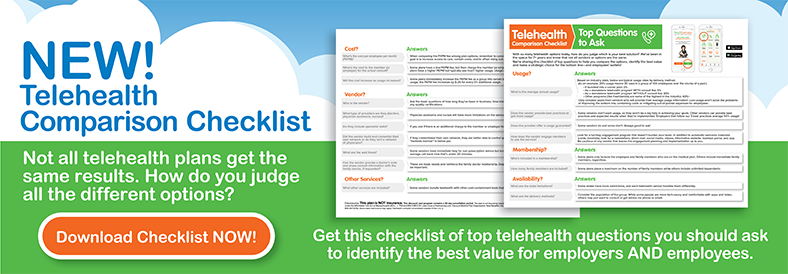FINANCIAL WELLNESS ISN’T A NEW EMPLOYEE BENEFIT
The above stat from a recent survey says a lot about how today’s health plans have a direct impact on the financial wellness of the end user – the employee. Maybe when you think about “financial wellness,” your brain immediately jumps to “wellness programs” that help employees stay fiscally sound. Or, perhaps, a program to save employees a couple bucks on their gym membership. Those might all be true, but increasingly, the health package plays a big role in financial wellness.
A new study from JPMorgan Chase tracked the financial habits of American households around the time of a major medical expense. They found that US households, on average, wait until they get an increase in income before paying for a major medical expense. Also, major medical expenses lead to long-term increases in credit-card debt, and lower income and liquid assets.
Are you recommending other tools that could be introduced alongside the medical plan to make it a more efficient and a complete package? Consider the gaps employees are facing with today’s health plans: fewer prescriptions covered by insurance, rising co-pays for doctor visits (if they even still exist), growing premiums and deductibles. More than ever before, employees are looking to their employers for tools and benefits to protect their healthcare and financial welfare.
I’m sharing 3 ways consumerism tools can both round out the total health package and contribute to the financial wellness of employees.
1. Curb rising out-of-pocket costs
In a recent survey, more than 75% of American workers reported their healthcare finances are a source of fear. In the same study, families specifically name the stress of preparing for out-of-pocket costs as their biggest challenge. By providing consumerism tools alongside the health plan, an employee can…
• avoid expensive doctor appointments and ER visits with other options to access care
• discover price transparency with advocacy services to compare prices before scheduling a procedure
• provide expert independent help with medical bills and claims issues
• gain additional saving options with an Rx savings program NOT tied to insurance
Each of these ideas keep more money in the employee’s bank account, contributing to the overall solid financial picture of their household.
2. Increase access to care without additional cost
What employee wouldn’t prefer to make a phone call and have a personal conversation with a board-certified doctor who can call in a prescription, if medically necessary – versus an expensive and time consuming office visit? What about email visits with specialists for second opinions and burning questions that might turn into longer-term issues if not dealt with.
With the doctors online solution, the mental burden of waiting for specialist advice or a second opinion contributes to the wellness picture. When illness of an employee or of a loved one takes over, worry and stress set in. The employee can no longer focus. A solution that allows the employee to correspond directly and privately with a specialist can get many of their questions answered. The specialists can provide questions for employees to ask their provider – this makes an in-person visit more productive and meaningful.
Options like telehealth and doctors online save the employee both time and money. They’re especially helpful to employees and have a higher utilization rate when they come without a fee to use the services. While the monthly PEPM is higher, it can be worth the cost on many levels.
Let’s face it, for some workers, their time literally equates to money. They can’t afford to miss work for a doctor appointment. As Dr. Bruce Sherman says in a recent Kaiser Health News article, “Individuals are penalized if they leave work to seek care…so they go after hours and their access to care is limited to urgent care centers or emergency departments.”
Workers in the lowest wage category were three times more likely to visit the emergency department than top earners, and more than four times more likely to have avoidable hospital admissions for conditions such as bacterial pneumonia or urinary tract infections. Other options to care provided alongside the health plan save money and protect the health of employees.
I’m not saying these services will solve every issue, but they can be a big help in giving employees high-quality, low-cost help and care.
3. Provide services that help alleviate burdens
Implementing an advocacy program gives employees a tool that REALLY helps them become better consumers. Advocacy offers price transparency, assistance shopping for providers, and bill negotiation. The employee is able to offload the burden of navigating these needs alone to an unbiased third party. This benefits the employer in a couple ways, as well…
1) the employee is able to focus on their job, knowing their advocate is at work for them
2) the HR team isn’t forced to handle stacks of EOBs that are dropped on their desks
Such tools not only help the mental and financial wellness of the employee but also allow the employer to keep their main asset working – and hopefully healthy and happy.
As we move from Obamacare to Trumpcare, some constants will remain: higher medical costs, increased out-of-pocket costs, higher deductibles, etc. As employee benefits professionals, it’s our job to find new solutions that help employees so that they see their employer’s benefit program as a true “benefit!”
Now it’s your turn! What tools have you introduced to your employer clients to help with an employee’s overall financial wellness?
















